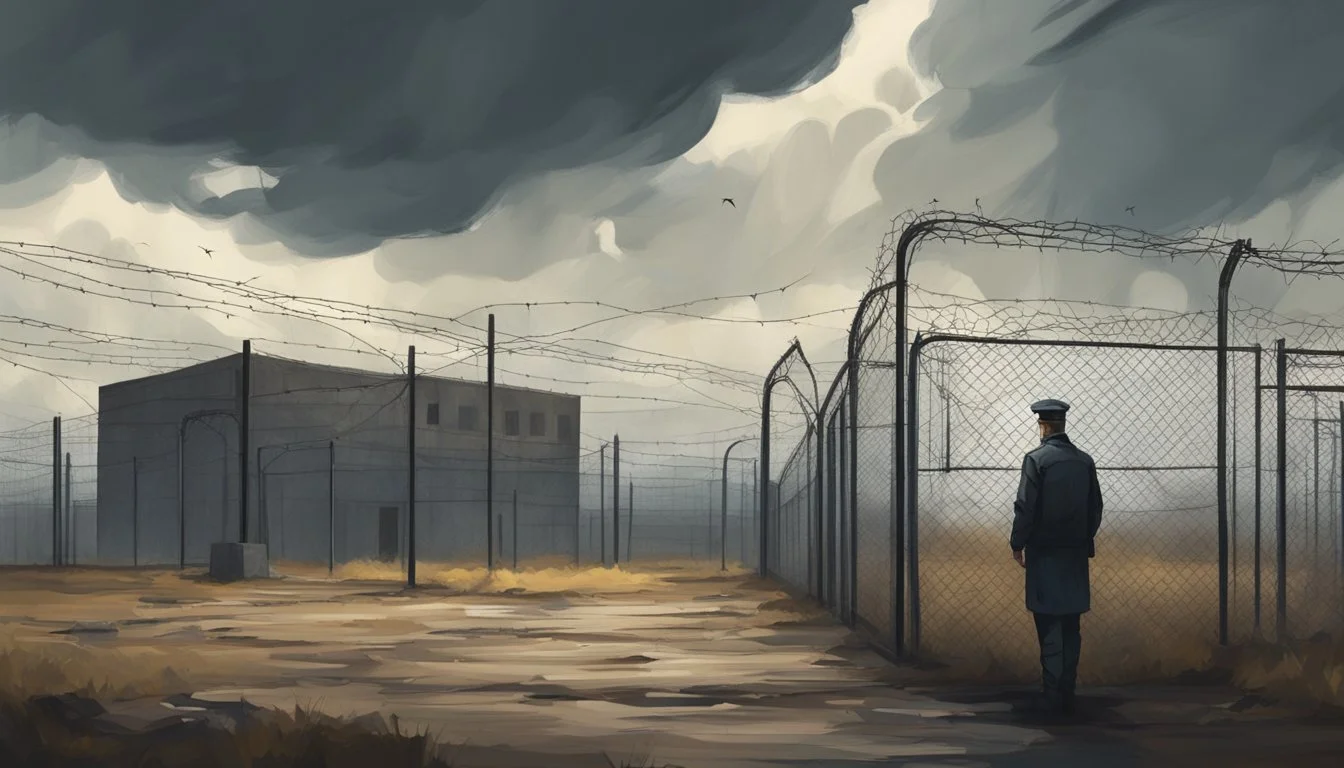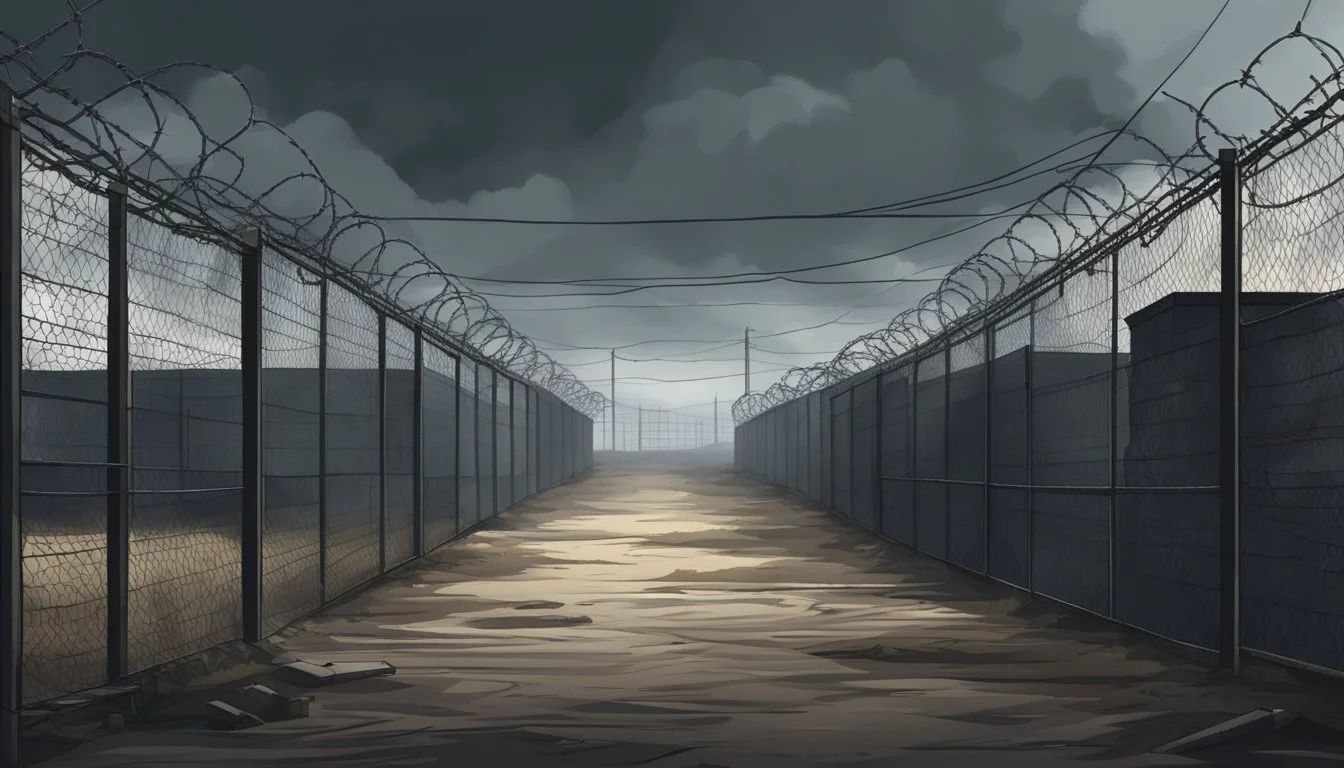Johnnie Crutchfield's Chicago Coda: Southside Slayer's Prison Fate Sealed in Maximum Security
Johnnie Crutchfield, known as the "Southside Slayer," terrorized Chicago's South Side for over a decade. His reign of terror focused primarily on the Bridgeport neighborhood and surrounding areas, leaving a trail of victims and a community gripped by fear.
Crutchfield's crimes drastically altered the social landscape of Chicago's South Side, particularly in Bridgeport. Residents implemented increased security measures, and the once tight-knit community atmosphere was shattered. The impact of his actions extended far beyond his immediate victims, reshaping entire neighborhoods.
The capture and imprisonment of the Southside Slayer marked the end of an era of fear for many Chicago residents. Crutchfield's fate behind bars brought a sense of closure to the community, though the scars left by his crimes continue to influence the area's development and social dynamics to this day.
Johnnie Crutchfield's Origins
Johnnie Crutchfield's path to becoming the notorious Southside Slayer was shaped by his upbringing and environment in Chicago. His early experiences and the influence of his surroundings played crucial roles in his development.
Early Life and Background
Johnnie Crutchfield was born in 1962 in Chicago's Bridgeport neighborhood. He grew up in a working-class family, the youngest of three children. His father worked as a factory laborer, while his mother was a part-time cleaner.
Crutchfield's childhood was marked by instability and frequent moves within the Southside. He attended multiple schools, struggling to form lasting friendships or connections.
Teachers described him as a quiet, withdrawn student who often kept to himself. Despite his academic challenges, Crutchfield showed an aptitude for mechanical work from a young age.
Chicago's Southside Influence
The Southside of Chicago in the 1970s and 1980s significantly impacted Crutchfield's formative years. The area was characterized by economic hardship, high crime rates, and racial tensions.
Crutchfield witnessed violence and criminal activities in his neighborhood regularly. He became involved with local gangs as a teenager, participating in petty crimes and drug dealing.
The harsh urban environment fostered a sense of alienation and resentment in Crutchfield. He developed a deep mistrust of authority figures and struggled with anger management issues.
Exposure to poverty and limited opportunities in the Southside likely contributed to Crutchfield's eventual descent into more serious criminal behavior.
Path to Notoriety
Johnnie Crutchfield's transformation into the Southside Slayer unfolded through a series of escalating criminal activities. His actions terrorized Chicago's South Side communities and left a lasting impact on the city.
The Rise of the Southside Slayer
Crutchfield's criminal career began in the late 1980s with a string of burglaries and assaults. He targeted vulnerable individuals, often women living alone in Bridgeport and surrounding neighborhoods.
As his confidence grew, so did the brutality of his crimes. Crutchfield developed a distinct modus operandi, entering homes through unlocked windows or doors late at night.
His attacks became more violent and sexually motivated over time. This escalation led to the "Southside Slayer" moniker given by local media.
Law enforcement struggled to connect the crimes initially due to their scattered locations across Chicago's South Side. This allowed Crutchfield to continue his spree undetected for several years.
Key Criminal Activities
Crutchfield's most notorious crimes occurred between 1991 and 1994. During this period, he was linked to at least 7 murders and numerous sexual assaults.
His victims were primarily African American women, ranging in age from 20 to 50. Crutchfield often stalked his targets before attacking, learning their routines and vulnerabilities.
Key locations of his crimes included:
Bridgeport
Englewood
Washington Park
South Shore
Crutchfield's methods became increasingly bold and sadistic. He sometimes returned to crime scenes or contacted victims' families, taunting both law enforcement and the community.
The fear generated by his actions led to significant changes in daily life for many South Side residents. Increased security measures and community watch programs emerged in response to the threat.
Legal Confrontations
Johnnie Crutchfield faced a complex legal battle following his arrest as the Southside Slayer. The judicial process involved multiple charges, extensive evidence gathering, and a high-profile trial that captivated Chicago.
Arrest and Charges
Police apprehended Crutchfield on September 3, 1995, after a lengthy investigation. He was charged with 11 counts of first-degree murder, 6 counts of attempted murder, and multiple charges of sexual assault.
The arrest came after DNA evidence linked Crutchfield to several crime scenes. Prosecutors also cited witness testimonies and circumstantial evidence in building their case.
Crutchfield's defense team initially questioned the validity of the DNA evidence and argued for separate trials for each murder charge. The judge denied this request, ruling that the similarities between the crimes warranted a single trial.
The Trial Process
Crutchfield's trial began on March 15, 1996, and lasted for 12 weeks. The prosecution presented a strong case, calling over 50 witnesses and introducing extensive forensic evidence.
Key testimony came from survivors who identified Crutchfield as their attacker. Forensic experts detailed DNA matches found at multiple crime scenes.
The defense strategy focused on challenging the reliability of eyewitness accounts and questioning the handling of physical evidence. They also attempted to establish alibis for some of the crimes.
After deliberating for 72 hours, the jury found Crutchfield guilty on all counts. The judge sentenced him to 11 consecutive life terms without the possibility of parole, plus an additional 220 years for the attempted murders and sexual assaults.
The Prison Fate
Johnnie Crutchfield's reign of terror as the Southside Slayer came to an end with his capture and subsequent incarceration. His life took a dramatic turn as he transitioned from a feared criminal to a prisoner facing the consequences of his actions.
Sentencing and Incarceration
Crutchfield received multiple life sentences without the possibility of parole for his heinous crimes. The judge delivered a scathing rebuke during the sentencing, emphasizing the devastating impact of his actions on the community. Crutchfield was transferred to a maximum-security facility due to the severity of his offenses and the potential threat he posed to other inmates and staff.
Security measures were heightened to prevent any escape attempts. The prison administration implemented strict protocols for his daily routine, including limited interaction with other prisoners and constant surveillance.
Life Behind Bars
Crutchfield's life in prison was marked by isolation and strict control. He spent 23 hours a day in his cell, with only one hour for exercise in a secure area. Visits from family or legal representatives were closely monitored and restricted.
Prison officials reported that Crutchfield initially struggled to adapt to the rigid structure of incarceration. He faced psychological evaluations and was offered counseling services to address his violent tendencies. Over time, he showed signs of compliance with prison rules, though authorities remained cautious.
Crutchfield's notoriety followed him into prison. Other inmates were warned to keep their distance, and special measures were taken to ensure his safety from potential retaliation.
Coda of Influence
Johnnie Crutchfield's reign of terror as the Southside Slayer left an indelible mark on Chicago's urban landscape and cultural consciousness. His crimes reshaped community dynamics and sparked a wave of media attention that continues to influence perceptions of the city's South Side.
Impact on Chicago's Southside
The Southside Slayer's actions transformed Bridgeport and surrounding neighborhoods. Residents implemented heightened security measures, including improved lighting and neighborhood watch programs. Community bonds strengthened as people united against a common threat. Local businesses adapted, with many adjusting their hours or adding security personnel.
Law enforcement practices evolved in response to the crimes. The Chicago Police Department increased patrols and developed new strategies for investigating serial killings. This led to lasting changes in police procedures and community engagement efforts.
The case also highlighted socioeconomic disparities in the area. It drew attention to issues of poverty, addiction, and lack of resources that made some residents more vulnerable to violent crime.
Cultural and Media Representation
Crutchfield's crimes became a focal point for media coverage, shaping public perception of Chicago's South Side. News reports often sensationalized the violence, contributing to stereotypes about the area. This coverage influenced how outsiders viewed the community for years to come.
The case inspired several true crime documentaries and books. These works explored the investigation, victims' stories, and the broader context of urban crime in the late 20th century. Some critics argue these portrayals perpetuated negative stereotypes, while others claim they raised awareness about systemic issues.
The Southside Slayer case also found its way into popular culture. It inspired fictional crime dramas and TV shows, including elements incorporated into "The Chicago Code" series. These representations further cemented the case's place in the city's cultural memory.
Reflecting on the System
Johnnie Crutchfield's case sparked debates about criminal justice procedures and rehabilitation efforts in Chicago. It highlighted systemic issues and prompted calls for reform.
Critique of Criminal Justice Procedures
The Southside Slayer investigation exposed flaws in evidence handling and witness interviews. Critics pointed to rushed arrests and potential racial bias in suspect profiling. Some argued that pressure to solve high-profile cases led to corners being cut.
Police departments implemented new protocols for serial crime investigations. These included improved evidence tracking and increased cooperation between jurisdictions. Training programs on cognitive bias were introduced for detectives.
Reform and Rehabilitation Discourse
Crutchfield's case reignited discussions about prison reform and rehabilitation programs. Advocates pushed for increased mental health services and education opportunities for inmates.
Some experts argued that better support systems could have prevented Crutchfield's crimes. They called for early intervention programs in at-risk communities.
Critics countered that public safety should remain the top priority. The debate highlighted the challenge of balancing punishment, rehabilitation, and crime prevention.
Prison systems began piloting new rehabilitation initiatives. These included expanded counseling services and job training programs. The effectiveness of these efforts remains a topic of ongoing study and debate.
The Aftermath
Johnnie Crutchfield's reign of terror left deep scars on Chicago's South Side. The community faced a long road to recovery, grappling with fear and trauma while striving to rebuild trust and safety.
Community Recovery
Bridgeport and surrounding neighborhoods worked to heal in the wake of Crutchfield's crimes. Local organizations stepped up to provide counseling services and support groups for victims' families and residents affected by the attacks. Community watch programs expanded, fostering a renewed sense of vigilance and cooperation among neighbors.
Law enforcement increased patrols and community outreach efforts to rebuild trust. Public safety workshops and self-defense classes became common, empowering residents to feel more secure in their daily lives.
Legacies and Lessons Learned
Crutchfield's case led to significant changes in how law enforcement approached serial killings. Police departments implemented improved evidence collection and analysis techniques, recognizing the importance of connecting seemingly unrelated crimes.
The tragedy sparked discussions about urban safety and the need for better lighting and security measures in vulnerable areas. City planners incorporated these lessons into future development projects.
Victim advocacy groups gained strength, pushing for enhanced support systems and rights for survivors and their families. The case also highlighted the importance of addressing societal issues that can contribute to violent crime, leading to increased funding for mental health services and community programs.







